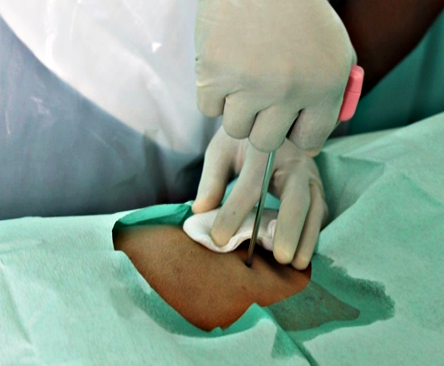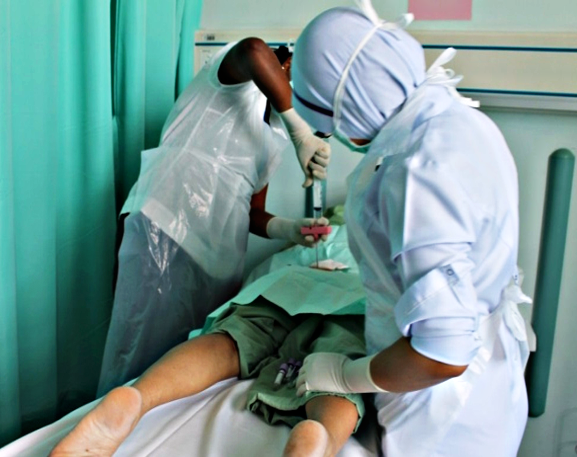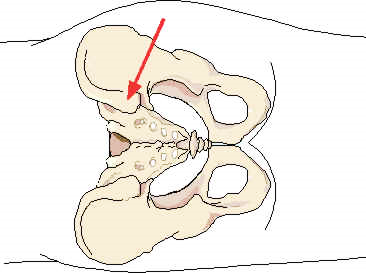People often believe in the the myth that the procurement of the bone marrow is dangerous and can cause paralysis as well as death. This is not true whatsoever, the procurement of bone marrow is a minor operation that carries a very low percentage for causing death. If the procedure is done correctly, it reduces any risk.
Procurement of the bone marrow is the gateway for the diagnosis of diseases related to blood cancers such as leukemia, multiple myeloma, anemia, pancytopenia, myelodysplastic syndrome (MDS), plasma cell dysplasia, and thrombocytopenia. It is also important to help monitor the effectiveness of the patient’s treatment.
Usually when a patient is suspected of suffering from symptoms of diseases that may be associated with blood cancer, the doctor will urgently set a date and make an appointment for a spinal tap to be done with the laboratory.
The laboratory will specify the quota of patients for that day so that the Medical Laboratory Technologist (MLT) on duty can estimate the time it will take to perform the procedure for bone marrow specimen collection and transportation of the samples immediately to the laboratory.
Before the start of the procedure, the assigned technologist will get prepared by assembling the required glass slides (Picture 1 (a)), filling a sterile container with formalin (b) as well as preparing the transport media UAMS (c) and filling it into sterile containers.
 |
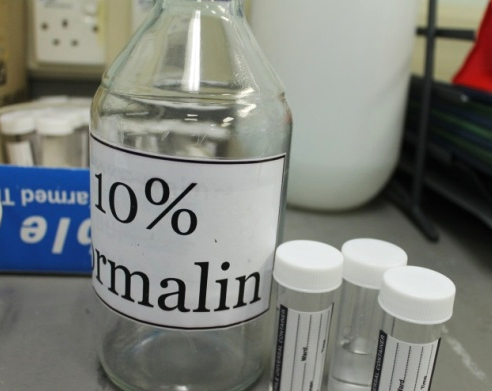 |
 |
| (a) The required equipment | (b) 10% formalin filled into sterile containers | (c) UAMS Transport Media |
Picture 1: Preparing treatment equipment
Before the procedure to obtain the bone marrow begins, the doctor will first ensure the MLT is present in the procedure room. This is important because during the procedure of obtaining the bone marrow, the smear of the marrow should be fresh and done immediately. Smear produced must be of good quality in order to help facilitate it being visible and clearly seen under the microscope.
The smear is important for the diagnosis of blood cancer. It gives the first indication and an almost accurate outcome before more detailed test can be carried out.
Bone Marrow Procurement
Upon the arrival of the MLT at the ward, first thing that needs to be done is to the identify patient and check as well as confirm the tests to be performed with the doctor in charge. This is important as to ensure no mistakes and no specimens that needs to be taken were overlooked. This will cause distress for the patient later.
During the course of the procedure to obtain the bone marrow, all equipments used should be in sterile condition as to ensure no infection will be transferred to the patient
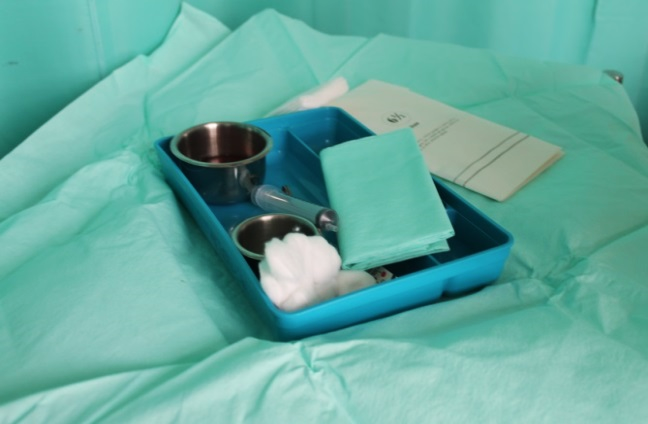 |
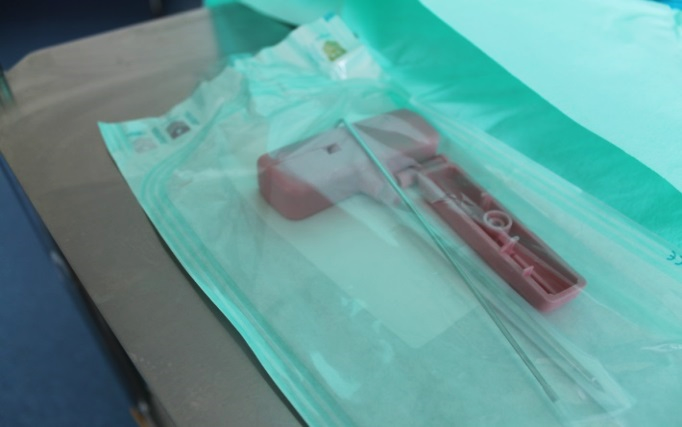 |
(a) (b)
Picture 2 (a), (b): Equipment that has been sterilized
Patients will then be taken to the procedure room. When the patient is in the procedure room, the MLT will first ensure the patient’s name is the same with the name on the barcode label given by the nurse. The patient is then placed in the position as shown below. Aseptic cleaning in the local area is done so that the area is germ-free.
Picture 3: Patient sedated
The patient is sedated with Midazolam and Pethidine according to the patient’s weight, measurements estimated to be 1 milligram for every 10 kg of the patient’s weight.
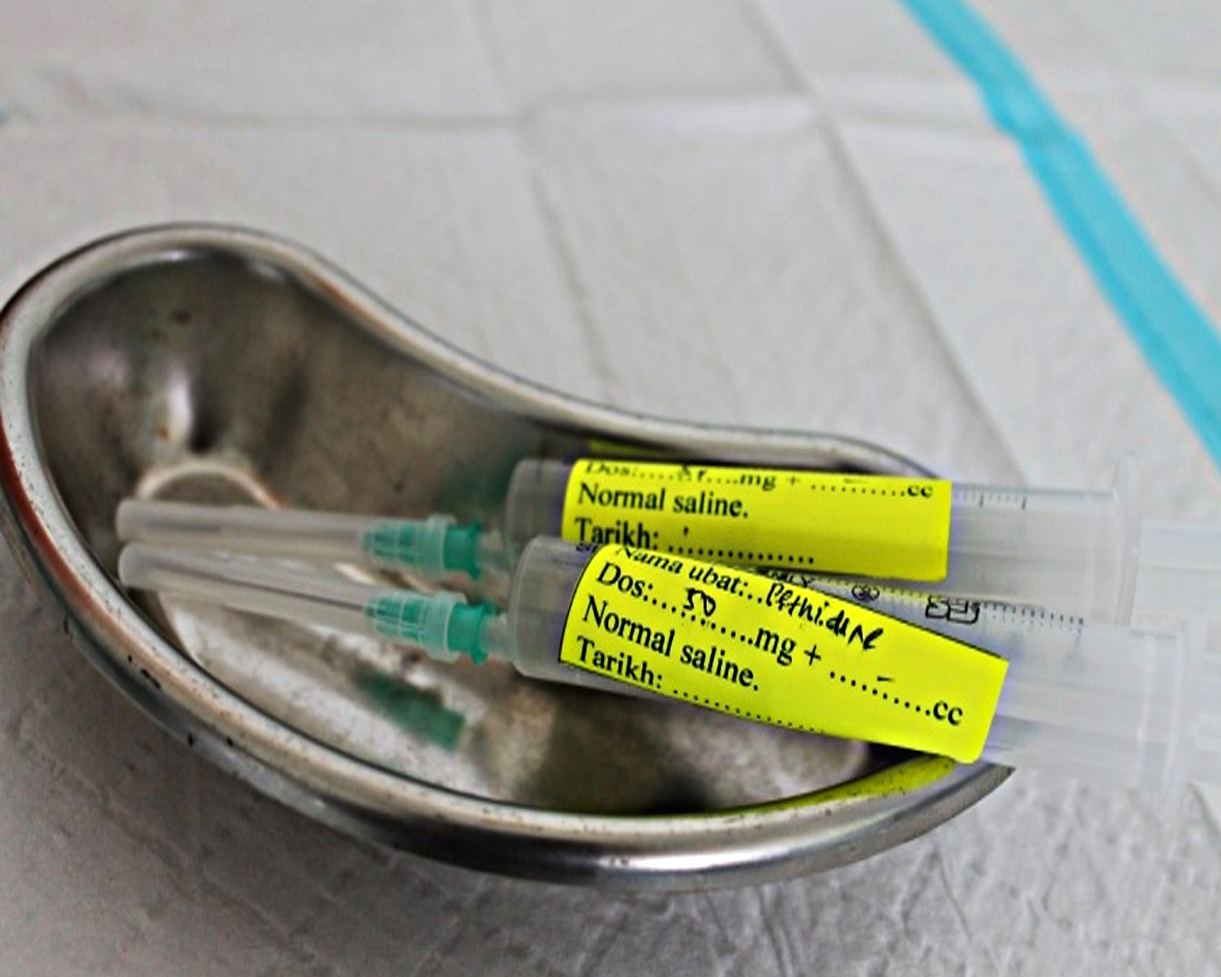 |
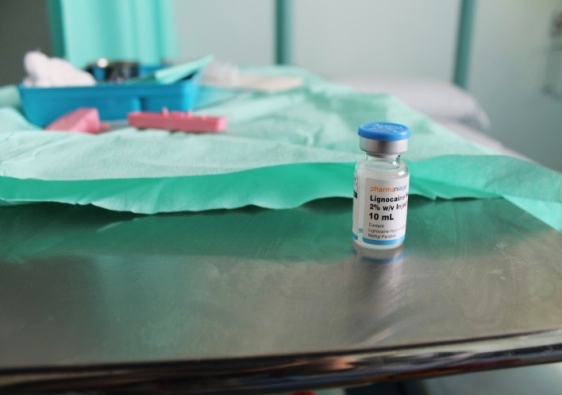 |
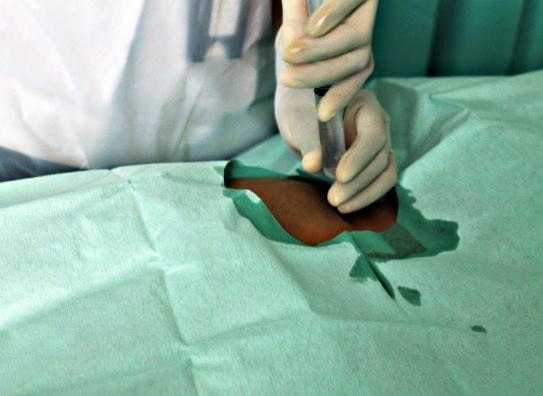 |
| (a)Midzolam and Pethidine | (b)Lignocaine anaesthetic | (c)medication administered to the patient |
Picture 4 (a), (b), (c): Local anesthetic medication
A local anaesthetic drug namely Lignocaine, will be administered to the patient to reduce the intensity of the pain so as to avoid the patient from agitating during the procedure.
Picture 5 : Doctor inserting a throca into the bone marrow area
By using the throca (a tool to drill the bone marrow), the doctor will be rotate in the tool approximately 10 to 15 times. This procedure requires energy as to ensure that the throca can enter the bone marrow area and is in a sturdy position and would not be easily detached.
Picture 6 : Doctor withdrawing blood using a syringe
Once the doctor feels confident that the throca is positioned and has entered into the bone marrow area, doctor will remove the throca needle and draw the marrow using a syringe.
The first liquid drawn will be given directly to the MLT to make a smear. Usually the patient will experience a bit of pain when suction occurs, this can be taken as a sign that the throca has gone into the bone marrow. Using the naked eye to see the smear, the MLT will inform the doctor whatever the specimens acquired is a proper specimen. This is to ensure the specimen taken is not a blood specimen.
Bone marrow specimens will display fragments (grain-like sand) at the end of the smear. This shows that the procedure was correct and it would give proper laboratory test results instead of false positive results (false positives).
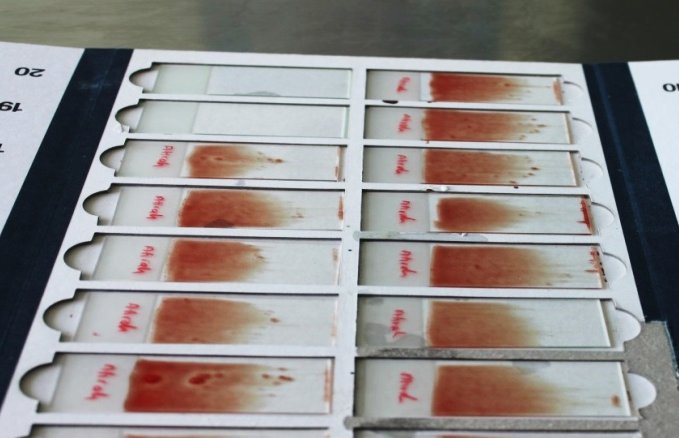 |
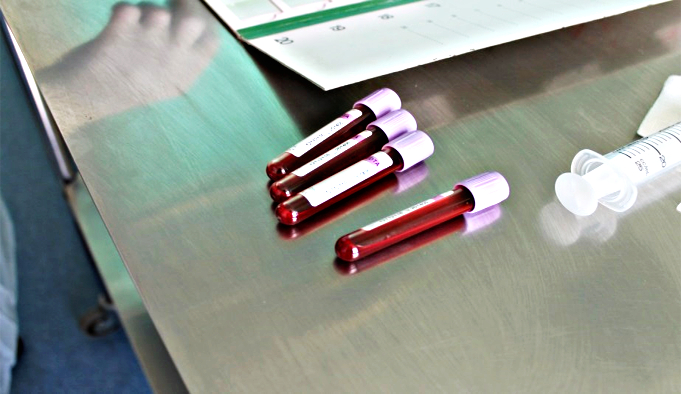 |
| (a) Bone marrow smear | (b) Bone marrow in EDTA tubes |
Picture 7 (a), (b): Products of the first and second suction
The second suction taken will be transferred immediately into EDTA tubes and shaken gently so that the specimen is not clotted. If the specimen is clotted, the MLT will ask the doctor to retake again the specimen. This is so that the specimen is not rejected by the laboratory.
For patients newly suspected of suffering from blood cancer, trephine specimens (bone marrow) is often taken from the posterior iliac crest. About 0.5 cm to 1.5 cm of Trephine is taken and placed into a container filled with formalin. For patients who only go thru a dry tap (no withdrawal of blood bone marrow) also require the trephine be taken.
Picture 8: Posterior Iliac Crest
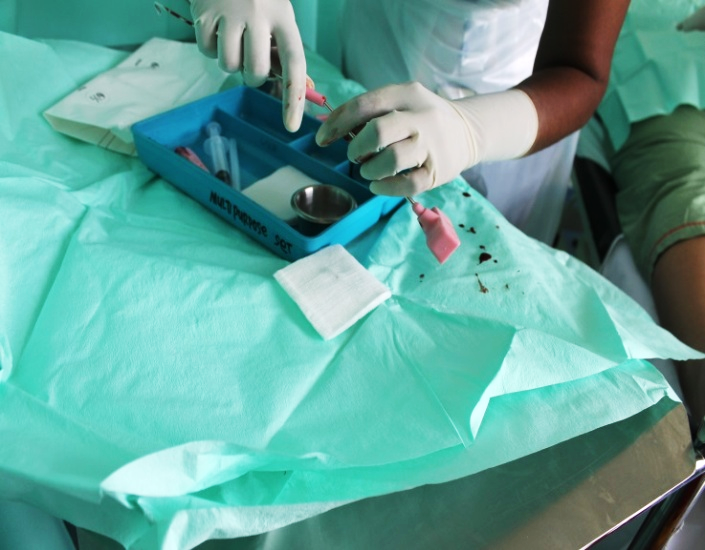 |
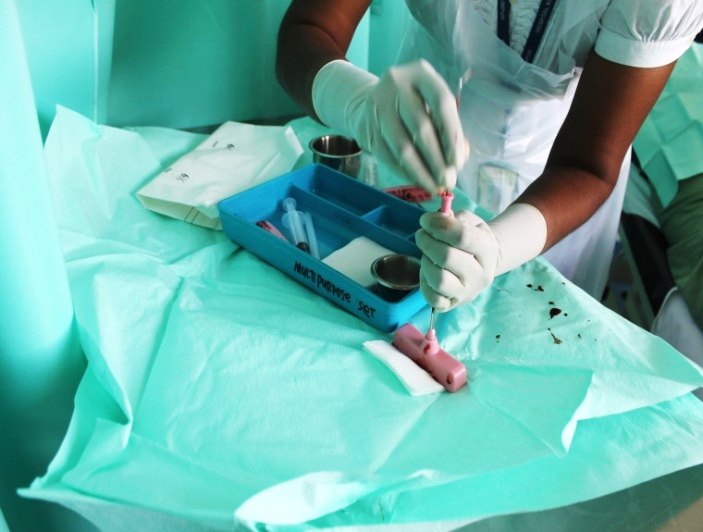 |
| (a) | (b) |
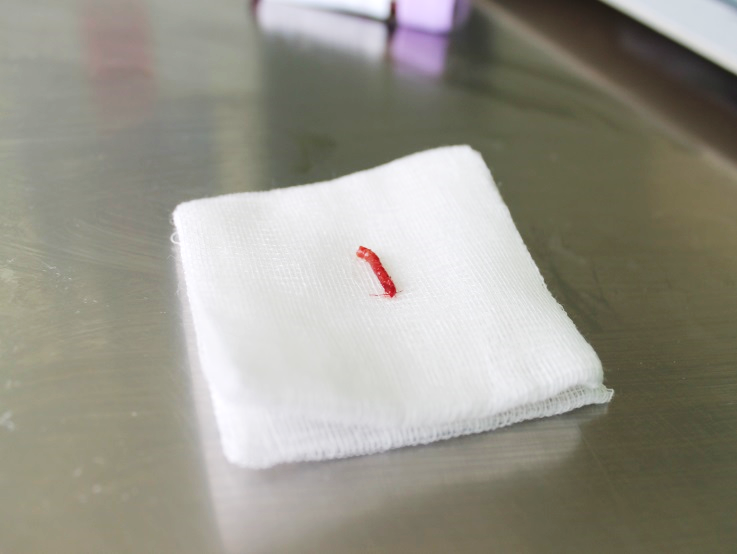 |
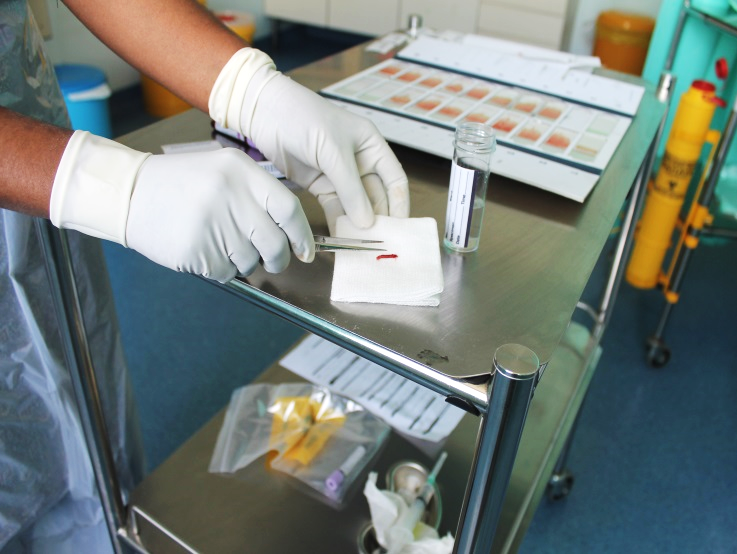 |
| (c) | (d) |
Picture 9 (a), (b), (c), (d): Trephine procuring procedure using throca
The specimens taken will then be affixed with a barcode, this is to ensure that the specimens is not mixed up with another patient’s specimen. The MLT will stick the barcode labels individually.
Picture 10: Specimen that has been labeled with barcode
After all of the specimens have been obtained and the MLT is satisfied with the quality of the specimen, the specimen will be sent immediately to be distributed to the relevant laboratories. The relevant laboratories are the flowcytometry laboratory, molecular, histopathology, and cytogenetics.
Picture 11: Specimen delivered to the laboratory
The smear should be air dried first before being put into the aerospray (staining machine). MGG staining (May Grunwald stain) is a stain that is most suitable for bone marrow smear to be be seen under the microscope.
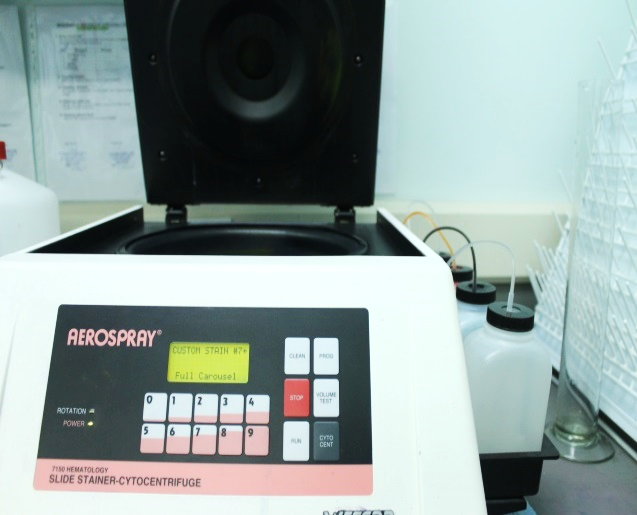 |
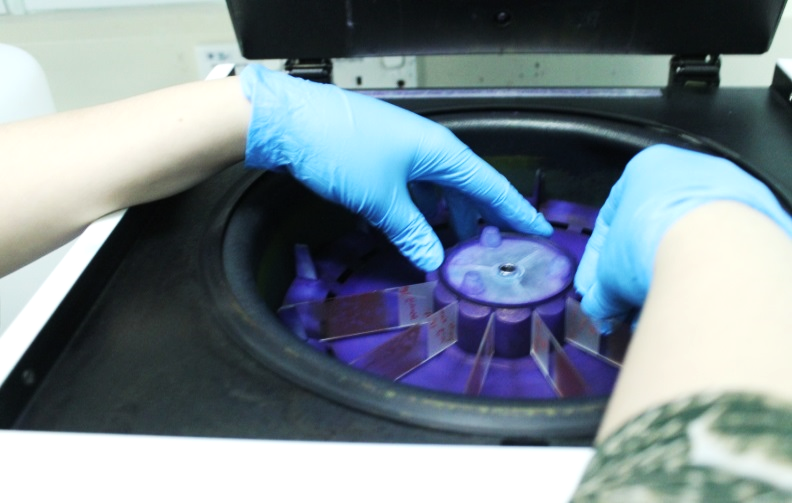 |
(a) (b)
Picture 12 (a), (b): Aerospray
Overall the proper and sucessful procurement of the bone marrow requires cooperation of all those involved. All the staff involved in the whole procedure plays an important role.
Reference
1. http://www.pathology.vcu.edu/education/PathLab/pages/hematopath/bm.html
| Last Reviewed | : | 3 April 2017 |
| Translator | : | Badarul Zaman bin Abdul Aziz |
| Accreditor | : | Abdul Rahman bin Bakar |



